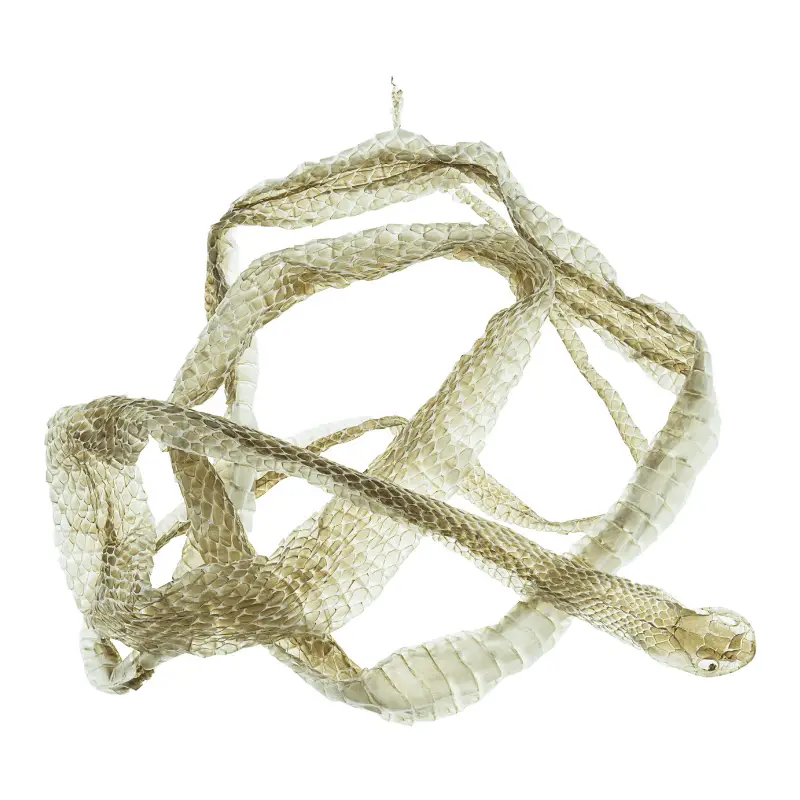The shedding “ecdysis” process is not an easy one for snakes to go through. Shedding is a natural process, and a snake owner needs to understand the benefits of this natural occurrence and the process of shedding. Let’s find out how often they shed.
Snakes shed their skin to grow and stay healthy. They will shed a layer of skin in one continuous piece, which is called ecdysis. This process occurs between four and twelve times a year, depending on the species, age and environmental factors like temperature or humidity levels.
Average shedding amounts
Depending on the snake species, the below is a rough indication of how often a snake will shed its skin broken down into age.
- Younger snakes – every two weeks
- Adult snakes – once a month
- Older snakes – twice a year
We know that skin shedding is a natural process that takes place in snakes. The shed process replaces the old, damaged skin with new healthy skin, and it can be up to twelve times a year. Let’s learn more about the snakes shedding process.
Why do snakes shed their skin?
Shedding removes harmful parasites and old skin cells from your snake’s body. A snake will also shed its skin when injured and need to heal. It also helps them discard tight skin when they grow.
- Remove parasites
- Time for fresh skin
- Skin is too tight
- Injured
How the Shedding Starts
Snakes have to work hard to remove the old skin. The snake sheds its skin in one piece by using a special fluid that softens and loosens the outer layer of dead cells, which then peels off like an onion.
How long does the shedding take?
The snake shedding process can take anywhere from two days to three weeks! Avoid handling them during this time as they can become stressed quickly, and the shedding process may take longer.
Shedding Process Signs
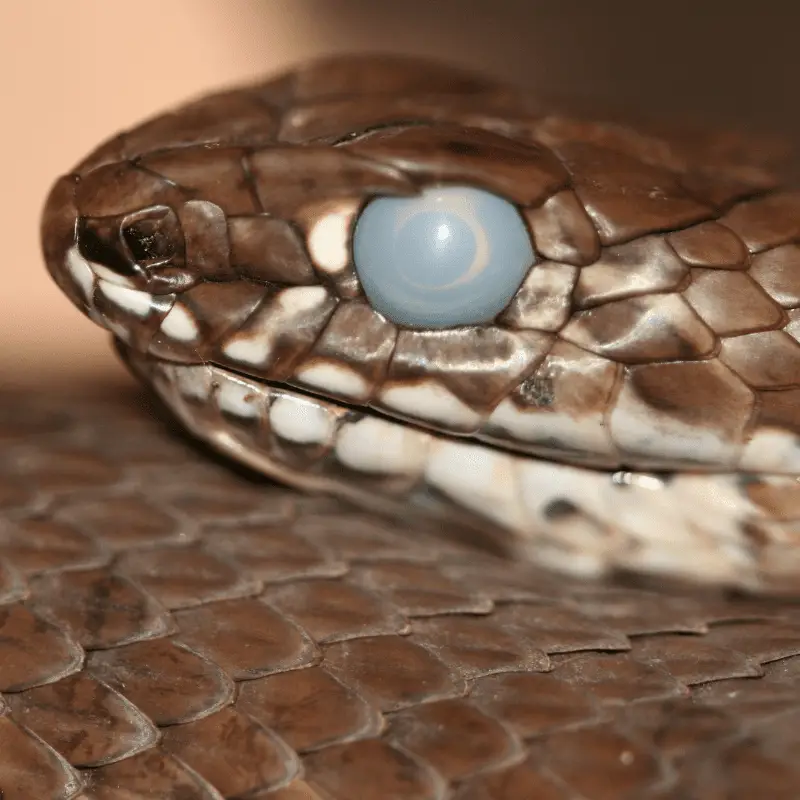
Just before shedding, the snake’s skin begins to turn bluish, and its eyes become opaque, hindering vision. The belly of the snake can turn pink. A snake will also go off their food. When this happens, you know the snakes shedding process is starting.
- Pink Belly
- Turn bluish
- Dulling
- Loss of appetite
- Cloudly eyes (Milky)
When a snake has cloudy eyes, it also impairs vision. Please take care during this time as it may result in aggressive behavior
First Stage of Shedding
Within a day or two, the snake will rub its head on something abrasive such as a log or rock, and this will help to tear open the outer layer so the snake can slide off the skin, leaving the old skin behind inside out.
This can take two days, or it can take up to three weeks. The older the snake, the longer it can take.
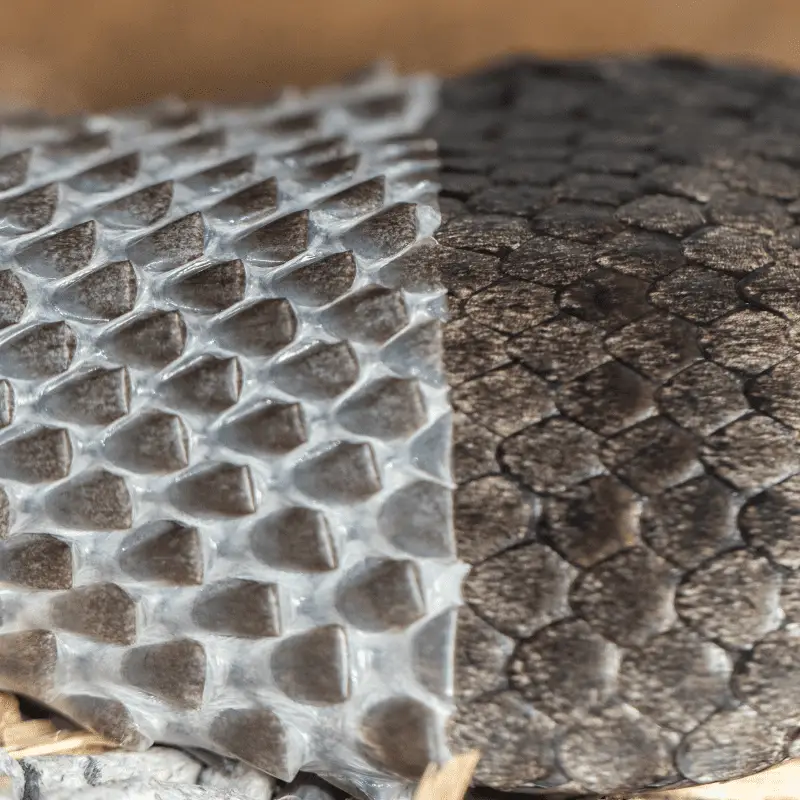
Assistance
Warm water can be an essential part of shedding. Make sure to add a basin inside your snake’s enclosure so it can bathe in the warm water, which will help its skin come off more easily.
What you can do during the shedding process
Your pet snake needs to have an area where it feels safe during this time, so they don’t get stressed out or injured by other pets or children in the house. Ensure that there are no obstacles like furniture or cords that could cause injury when your snake sheds its skin. It would help if you also made sure that there’s enough humidity in the air for them and some food nearby since they might not be able to eat while they’re shedding due to being constricted by their old skin. Finally, make sure you provide plenty of hiding spots! Your pet will need somewhere comfortable where it can feel secure during this vulnerable time – even if it’s just a cardboard box with holes cut into it!
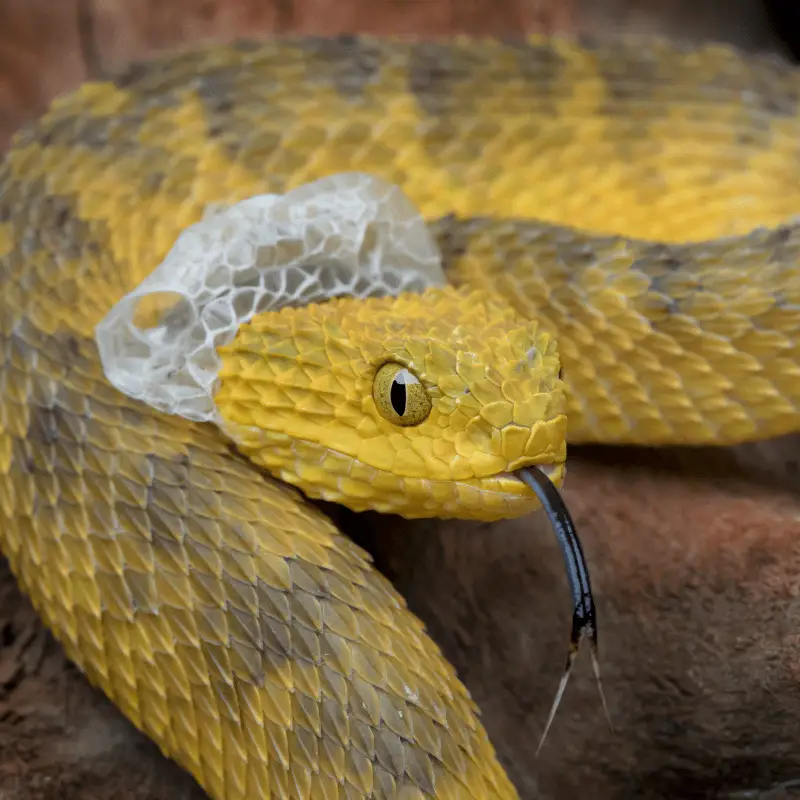
shedding 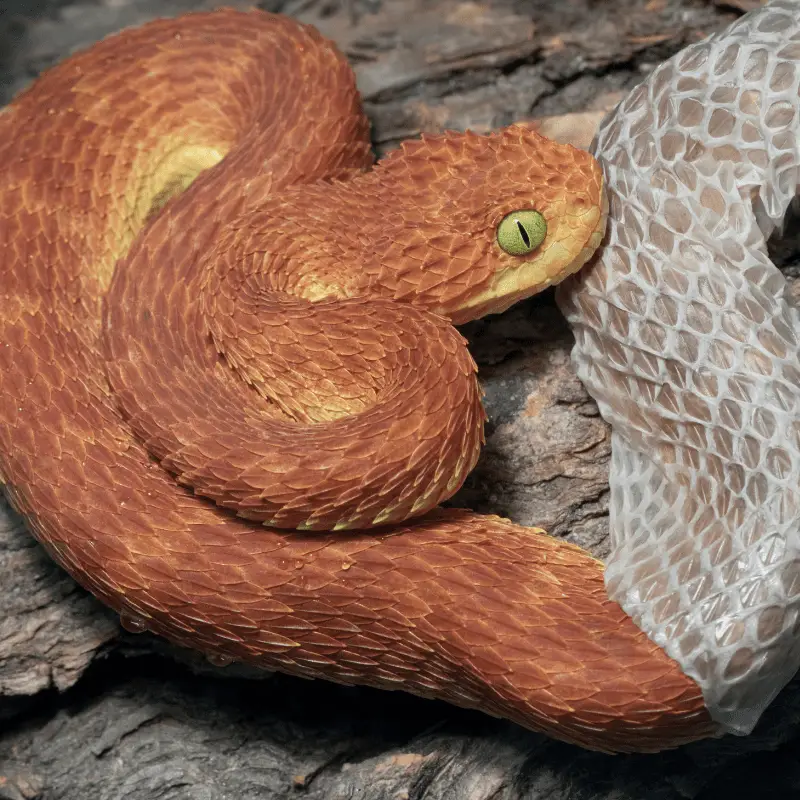
Viper during shed 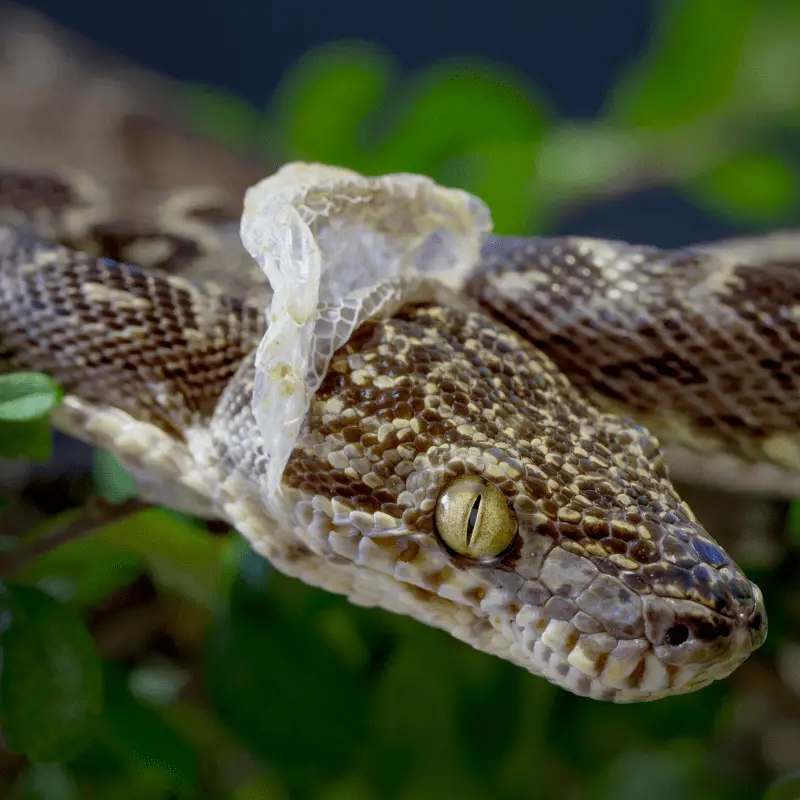
shedding of head 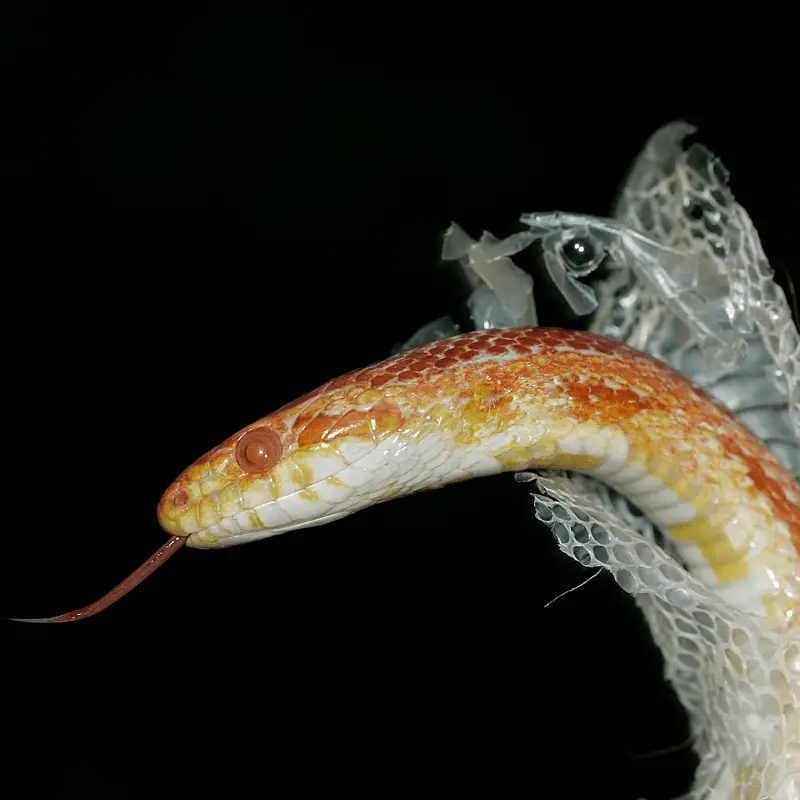
Cornsnake during shed
Failed Snake Shed
Sometimes a snake can fail to shed its skin correctly. This could be down to many possibilities, such as the enclosure’s temperature, old age, or even illness that can prevent a snake from shedding its skin correctly.
Signs:
- Flaking of the skin
- Patches
- Stuck shed
- Partially shed
Reasons:
- Mites
- Incorrect humidity
- Handling
- Malnutrition
- Dermatitis
- Trauma
- Illness
- Old age
Most failed snake sheds can be resolved by creating a snake sauna or a humidity box; this way, the skin can and will come off easier. However, give it time. Don’t handle your snake during the shedding process and never interfere with snakes shed, or attempt to pick it off yourself at this point as it’s a clear sign that a snake is ill or is suffering from malnutrition. If no improvement after 24 hours, then you will need to seek professional reptile veterinary assistance.
What not to do:
- Handle your snake
- Pick old skin off yourself
Have you ever wondered why the dead skin is much longer than the snake?
The reason for this is that snakeskin covers both the top and bottom of each scale. When a snake sheds its skin, it leaves behind a long strip of old, dry scales. This can be seen in many different animals, including lizards and armadillos also.
Do snakes hide when shedding?
Yes, they will hide more than usual. Snakes are naturally feeling more vulnerable during the shedding process and will instinctively want to hide.
Do baby snakes shed more than adult snakes?
Yes, a young snake will typically shed more than adults as they grow quicker during the younger years, which means they quickly grow out of their skin and need to shed more.
What do you do after a snake sheds?
You will notice your snake’s skin is fresh, clear and super perfect. Your snake will be in an excellent mood. You can go back to handling them as before.
- Remove the skin from the enclosure
- Remove any extra poo, as they poo more just after a good shed
- Make sure fresh water is topped up
- Enjoy your time with your snake
- Offer some food
How long after a snake sheds can you feed it?
If your snake has had a successful shed, then it will be more than likely starving. So feeding after a shed straight away will satisfy your snake’s needs. However, dont be alarmed if they refuse it, and their appetite is yet to come back. Some snakes can become sensitive after a shed. Give them a day or two, and they will be back to their usual selves.

